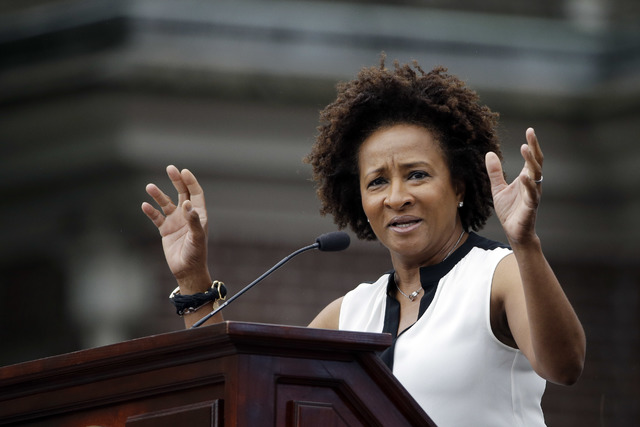PHILADELPHIA — Gay rights activists gathered in front of Independence Hall in Philadelphia on the Fourth of July to mark the progress of their movement and pay tribute to those who launched it a half-century ago — but also made
PHILADELPHIA — Gay rights activists gathered in front of Independence Hall in Philadelphia on the Fourth of July to mark the progress of their movement and pay tribute to those who launched it a half-century ago — but also made it clear that the fight for equality was far from over.
“In too many communities, you can still get married on Sunday and then fired on Monday . Marriage equality was a critical milestone but not the final destination,” said activist Aisha Moodie-Mills, referring to the recent U.S. Supreme Court decision legalizing same-sex marriages nationwide.
“If history has taught us anything, it’s that no community’s rights are one and done with a simple piece of legislation. . Equality is not set in stone,” Moodie-Mills said.
The event was part of a weekend-long celebration of some of the earliest gay rights marches, including a gathering of about 40 protesters calling for equality at the same location on July 5, 1965.
Organizers called that demonstration an incredibly bold and courageous move by the standards of the day, when homosexuals were legally barred from government jobs and could be arrested for engaging in consensual intimate acts even in the privacy of their own homes. The American Psychiatric Association classified being gay as a disease that could be treated with chemical castration or lobotomy.
“Fifty years ago, America perceived us as degenerates,” said Malcolm Lazin, who organized the anniversary events. “One of the many goals of the gay pioneers was to demonstrate that we are first class American citizens.”
One way they did that in 1965 was with a dress code for the picketers: suits for men, dresses and pantyhose for women. The marchers were silent, holding hand-lettered signs calling for fair treatment. During Saturday’s ceremony, a group of 40 people recreated that march, walking in a circle on the cobblestone street in front of the building where both the Declaration of Independence and the Constitution were signed.
The event also took time to pay special tribute to the “mother and father of the gay rights movement,” as Lazin described them: activists Barbara Gittings and Frank Kameny.
Other notables included Edie Windsor, the plaintiff in the 2013 Supreme Court case that struck down parts of the Defense of Marriage Act; Judy and Dennis Shepard, whose son Matthew was killed in 1998 because of his sexual orientation; the Rev. Gene Robinson, the first openly gay priest in the Episcopal Church; and Walter Naegle, long-time partner of civil rights activist Bayard Rustin, a confidante of the Rev. Martin Luther King Jr.
Entertainer Wanda Sykes, who hosted the event, joked that she was now “a happily married woman in all 50 states, but I’m not sure I’m going to go test the water in all 50 states. I’ll let them get a little bit used to it first.”
Jim Obergefell, who was listed as the lead plaintiff in the successful lawsuit that led the Supreme Court to legalize same-sex marriage, was stopped after his remarks by South Jersey resident Jim Mancinelli, 64, and his partner of 15 years, Dave Helgeson, 52.
“Thank you so much. I really appreciate what you did for all of us, the strength you showed for all of us, the courage you showed for all of us,” Mancinelli said, gesturing between himself and Helgeson as his eyes filled with tears.
Obergefell, too, was emotional as he replied, “I loved my husband,” who died in 2013.
“It was the easiest thing in the world to do.”



